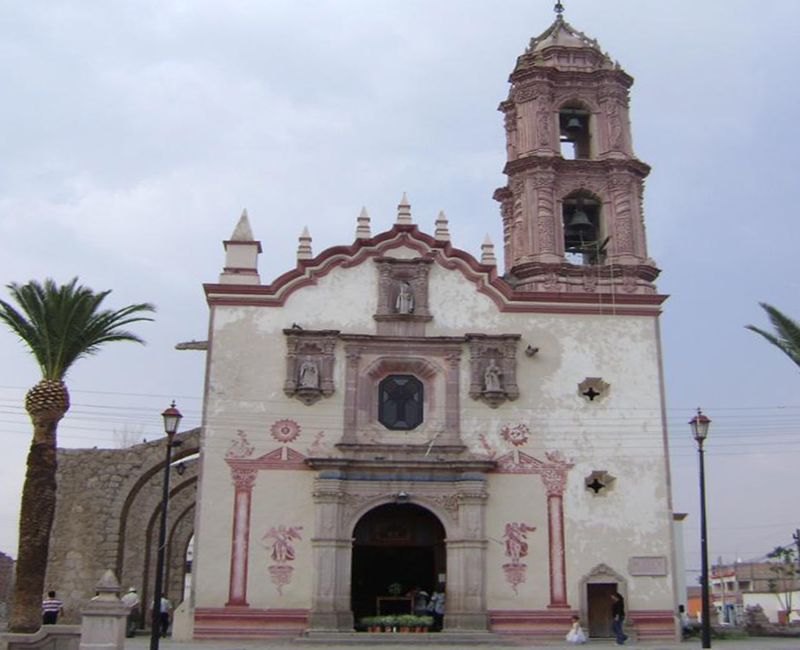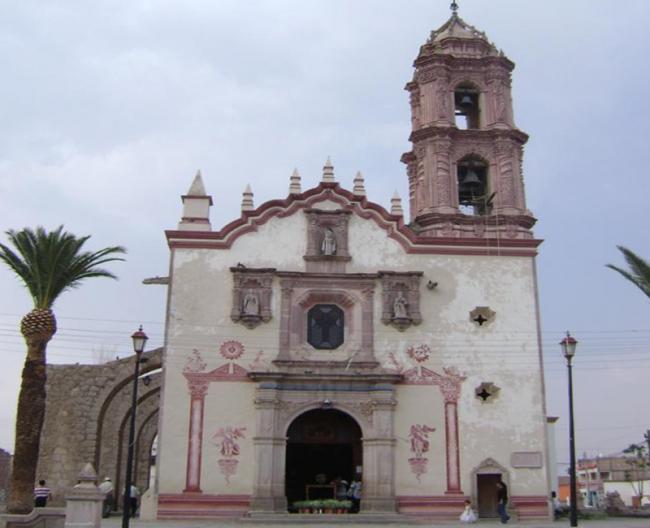Antigua hacienda de Pabellón de Hidalgo
Route element
Antigua hacienda de Pabellón de Hidalgo
La hacienda Pabellón de Hidalgo, like most haciendas in Aguascalientes, owes its existence to the investment of miners from Zacatecas. The properties of Garabato and San Isidro, acquired by the Zacatecan miner José de la Peña Durán in 1681, would eventually give rise to the hacienda of Pabellón de Hidalgo.
By the late 18th century, Hacienda Pabellón de Hidalgo thrived due to its high productivity, primarily in livestock. This economic prosperity was reflected in significant construction investments. The elements comprising the hacienda typify the region's hacienda architecture: a central plaza organizes the space, flanked by the main house, the church, and the workers' houses. The hacienda boasted one of the largest 18th-century dams in Aguascalientes, complemented by a complex system of spillways, aqueducts, and control gates that distributed water to the irrigation lands. Additionally, it had a mill and a series of granaries (trojes).
The church of the hacienda was considered one of the most beautiful in the region. The chapel features a spacious atrium with a half-surrounding wall on the exterior, and it dates back to February 2, 1782, according to the inscription found on the facade. The facade includes a large coral window surrounded by three niches with pilaster columns, and the tower consists of two levels. Inside, the chapel has a single nave with groin vault ceilings, and in the main body of the church, there is a reserved balcony with wooden lattice where the hacienda owners attended Mass. In front of the altar stands an 18th-century pulpit adorned with panels.
Similar to the church, the main house of the hacienda, which now houses the Museum of the Insurgency, is well-preserved with its courtyards, porticos, and corrals. The stables are in ruins, but the arcade can still be appreciated.
Although Pabellón was one of the most productive and esteemed haciendas of the 19th century, like other haciendas in the region, it faced difficulties due to the effects of the insurgent movement. Additionally, the introduction of the railroad during the 1880s led to the abandonment of the old royal roads, which negatively impacted its operation and connectivity with other commercial and mining centers.





